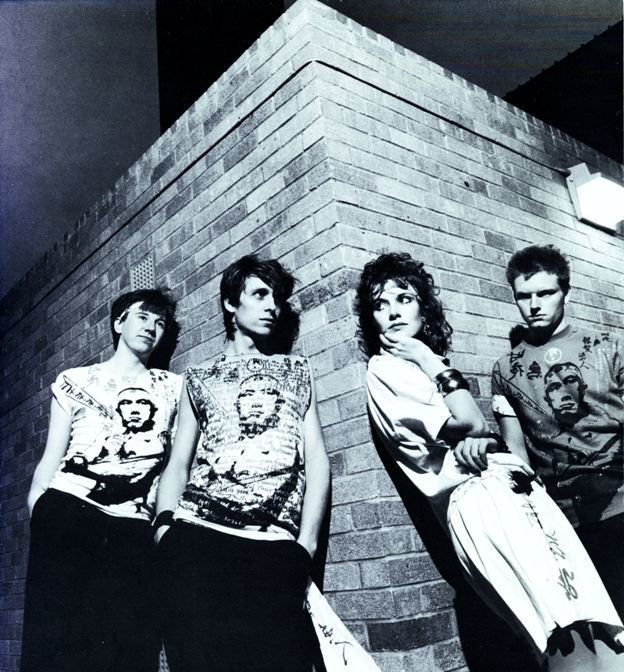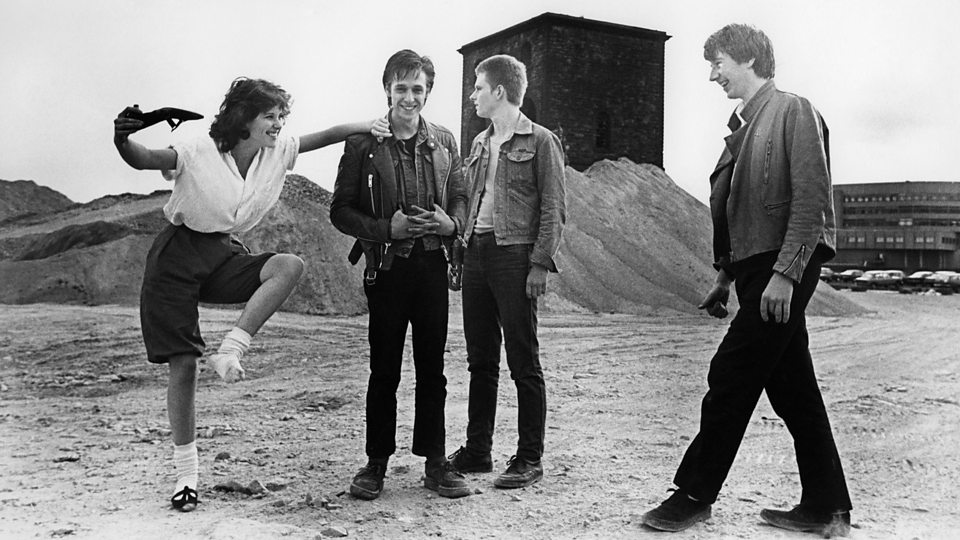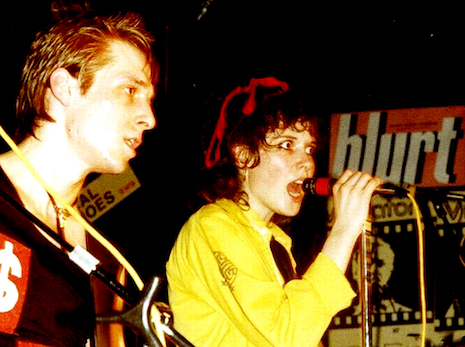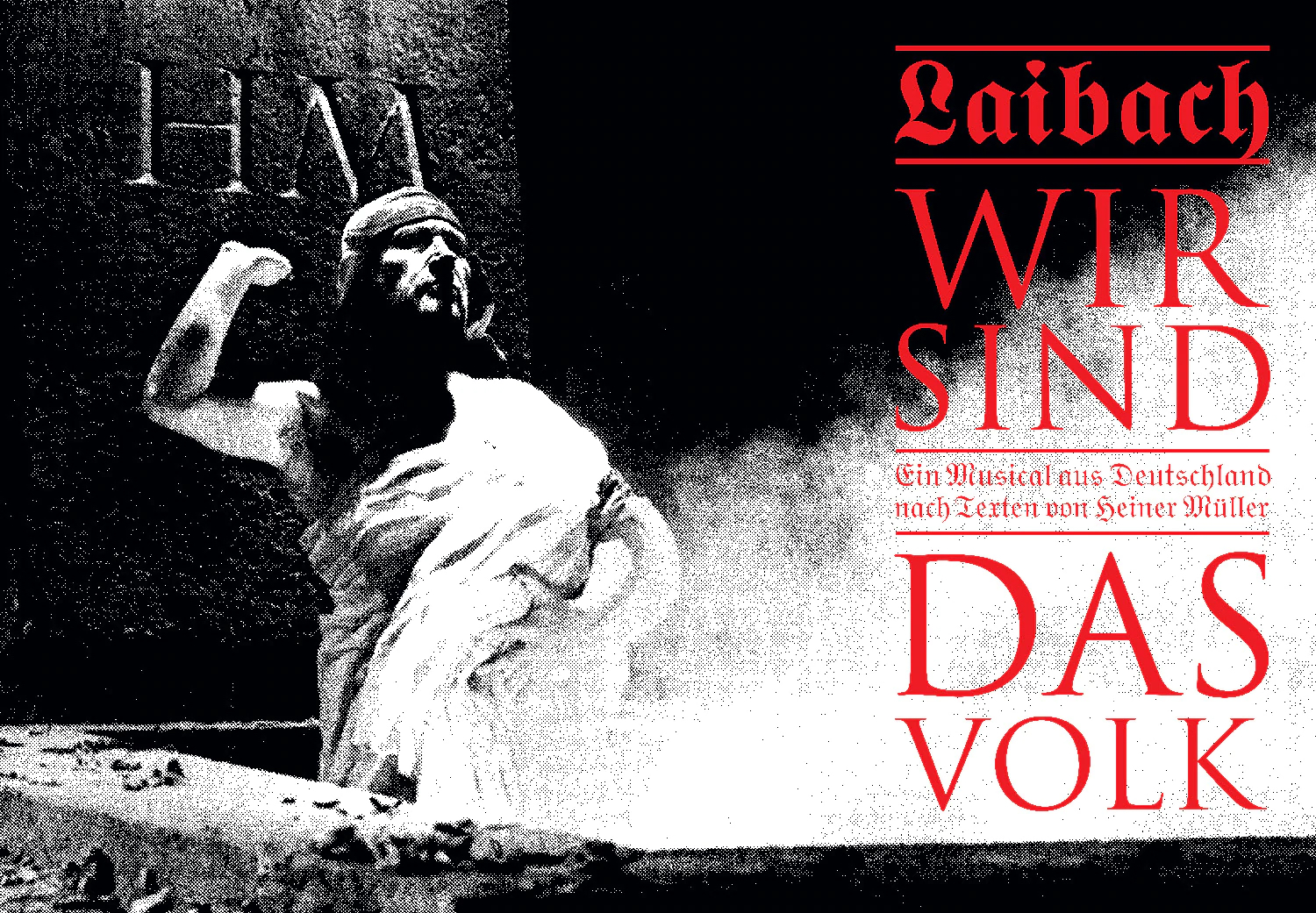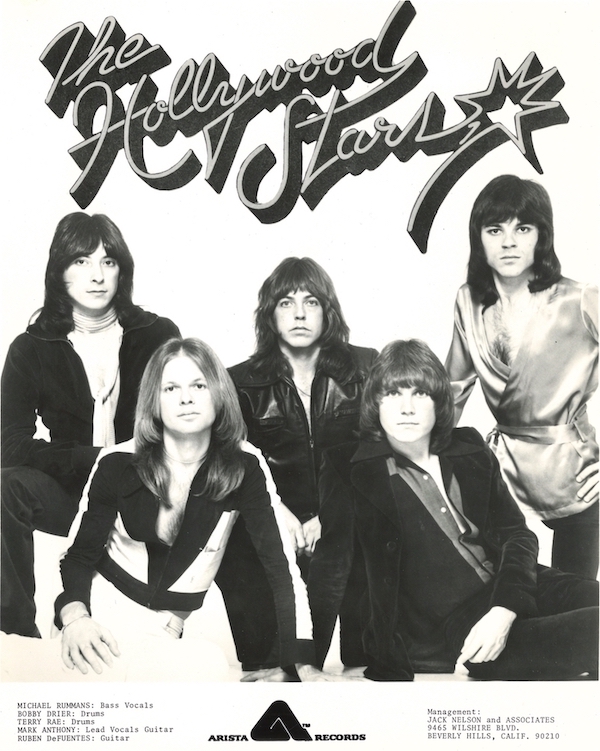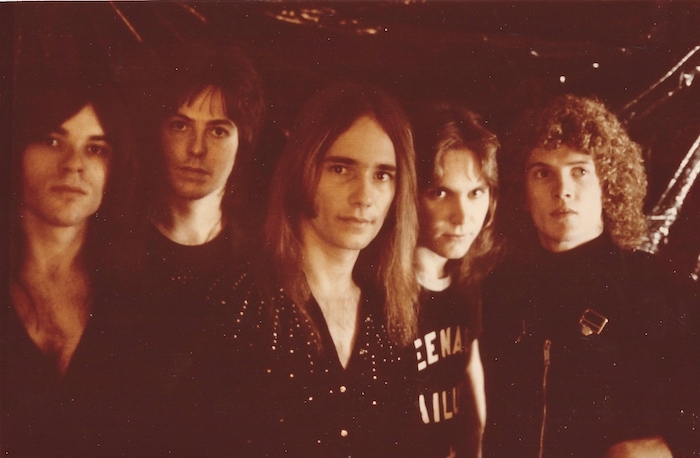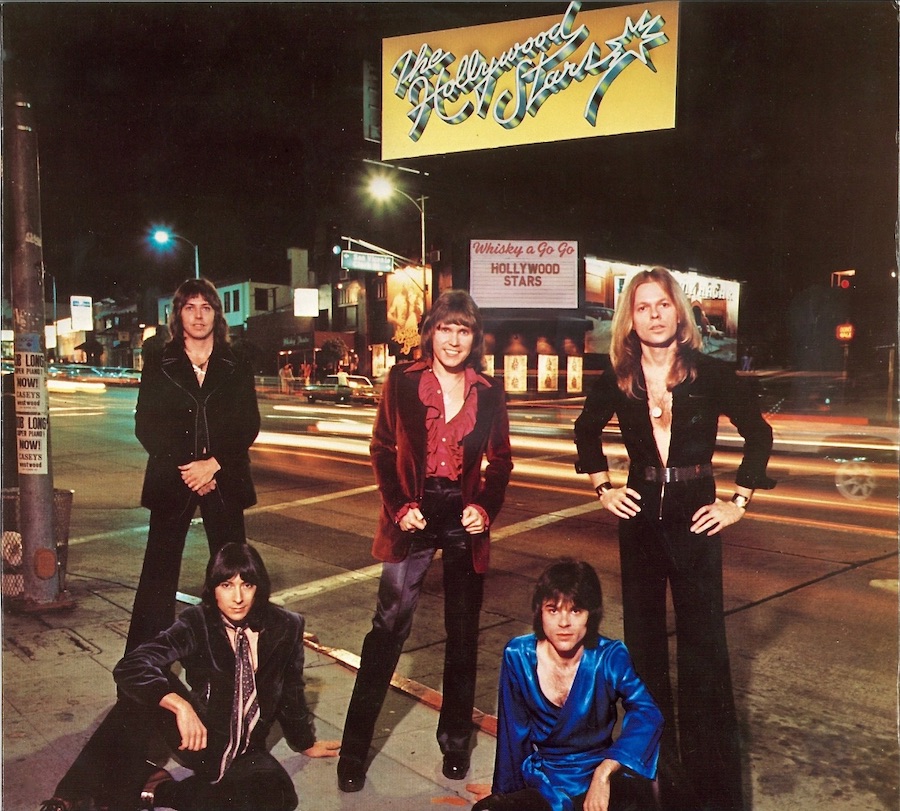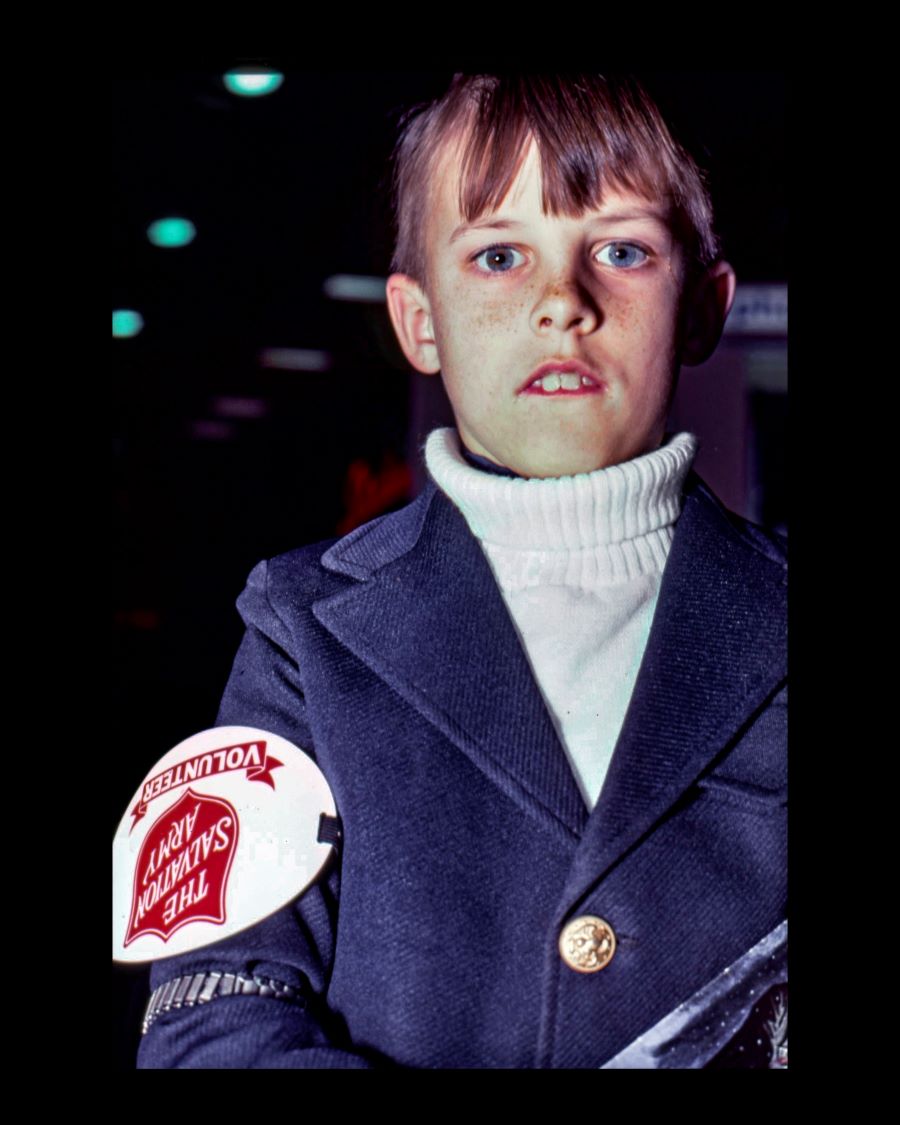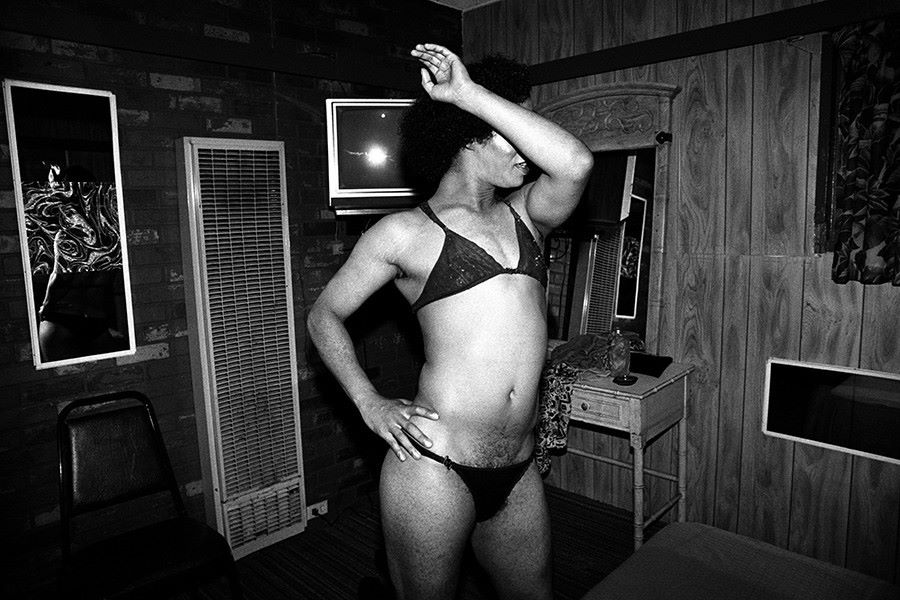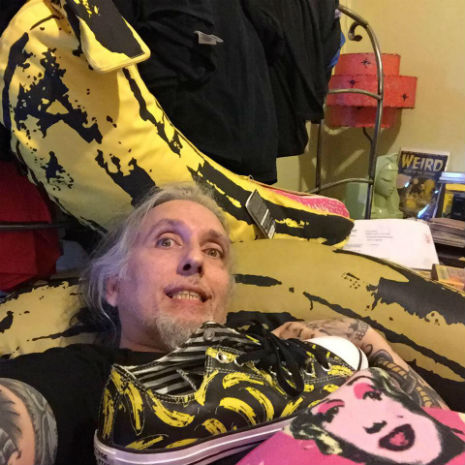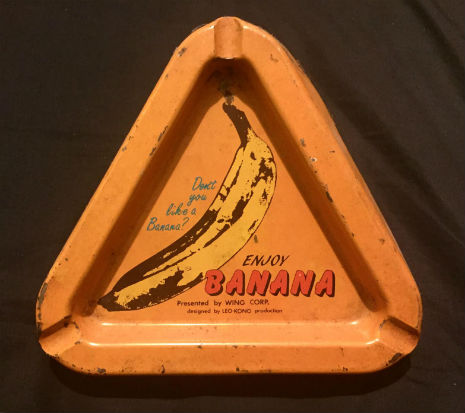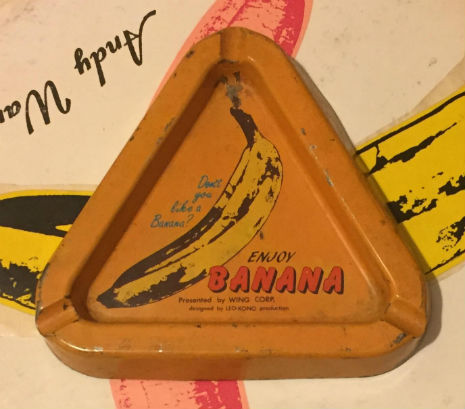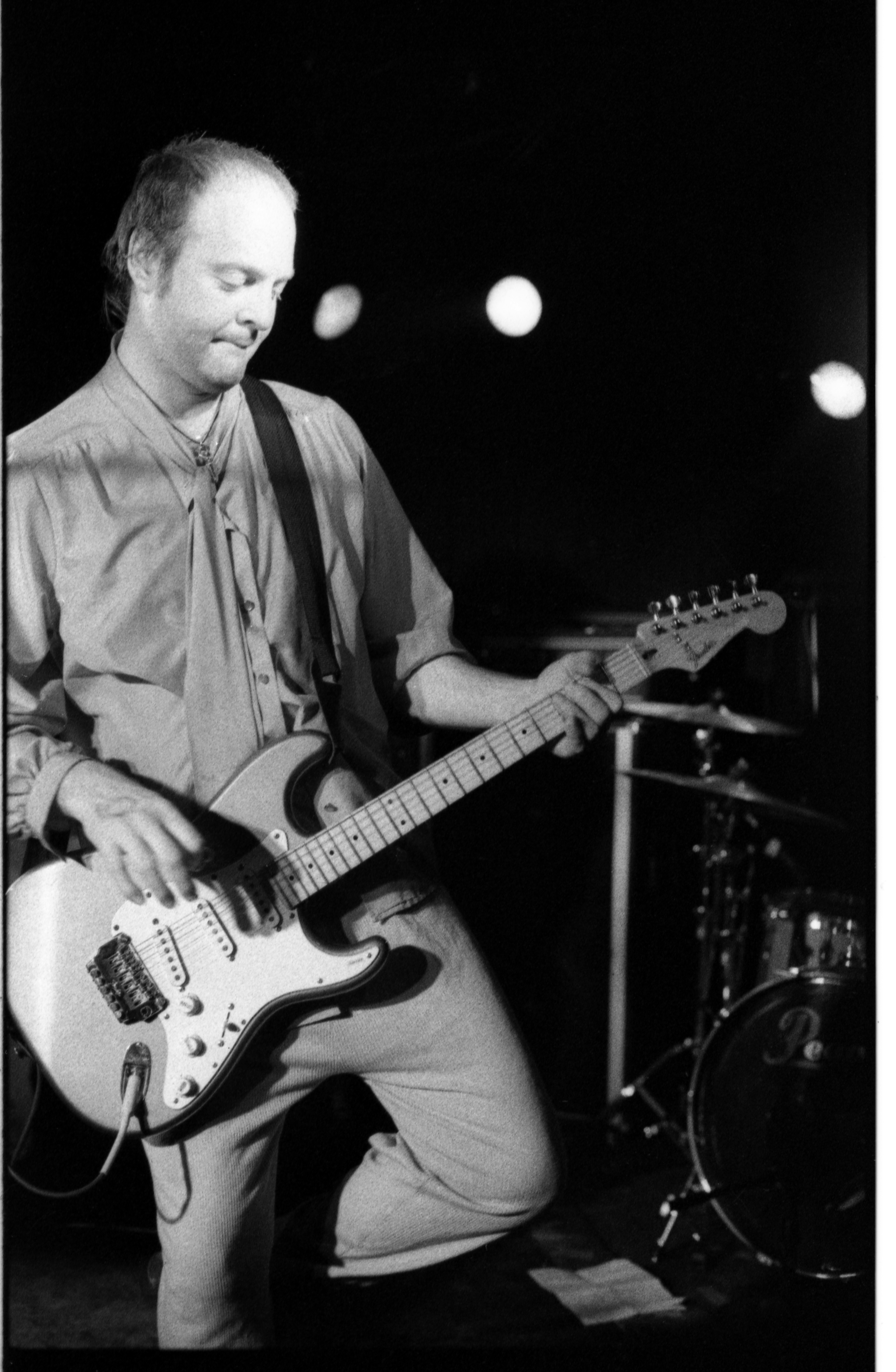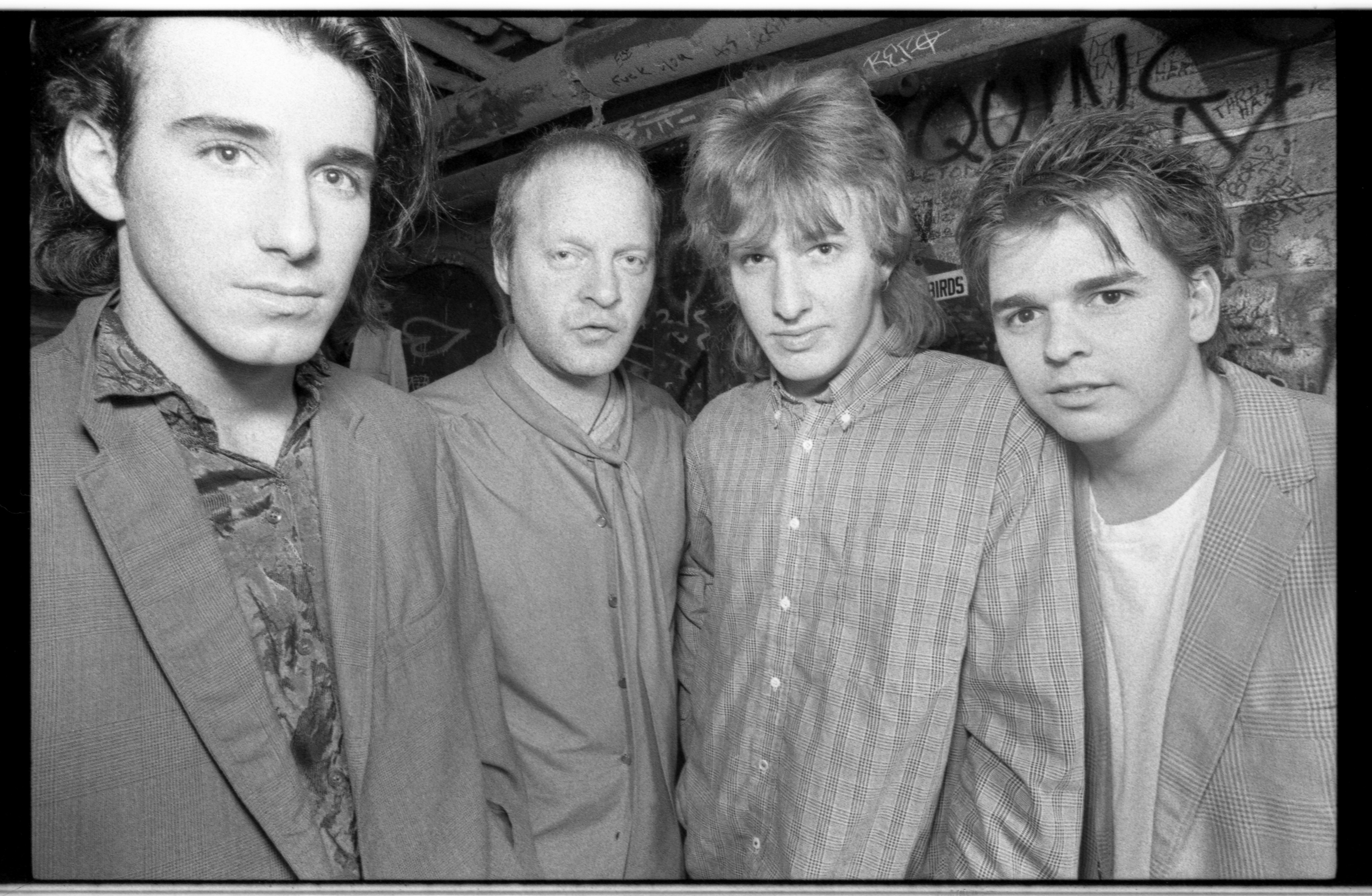
Because I love all of their albums so very much, it’s difficult for me to say which is my favorite Gun Club album—it’s Mother Juno, but just by a hair—and much easier to pick out my favorite Gun Club song. That would be “Walking with the Beast” from The Las Vegas Story. (“Lupita Screams,” “Death Party” and “The Lie” run close behind.)
“Walking with the Beast” is a motherfucking motherfucker of a song. It grabs you by the throat and and shakes you until you are limp. Patricia Morrison’s rumbling bass, Kid Congo Powers’ feedback-driven power chords, and Terry Graham’s POUNDING drums almost attack the listener. It’s heavier than any heavy metal. For those of you reading this who have never had the pleasure, “Walking with the Beast” is simply the musical equivalent to looking up at the sky and realizing that a violent tornado is about to overtake you.
(I’d have embedded the song here, but YouTube currently lacks even a single upload of the studio version. I direct you then to your favorite streaming service. PLAY IT LOUD.)
When an album starts off that strong, you would think that it’s all downhill from there, but there’s one classic Gun Club winner after another, including two leftfield cover versions. At the start of side two, a skronky snippet of Pharoah Sanders’ “The Creator Was A Master Plan” segues into a plaintiff take on “My Man’s Gone Now,” the widow Serena’s aria from from George Gershwin’s classic opera Porgy and Bess. On paper, that shouldn’t work, but it does, spectacularly so.
I’ve bragged on this blog many times about seeing Gun Club live—one of the best, most exciting live shows I’ve ever seen in a long career of concert going—but what I didn’t realize until recently is that the band that I saw—Morrison, Graham, Kid Congo—didn’t last but a few more shows, when drummer Graham snuck out in the middle of the night and returned to America after discovering he wasn’t going to be paid for the tour. The incarnation of the Gun Club that recorded The Las Vegas Story, that everyone tends to see as the most iconic era of Jeffrey Lee Pierce’s revolving door of a band, lasted but a single year.
I got to see one of my all-time favorite bands, supporting one of my all-time favorite albums, but just by the skin of my teeth. Five days later Graham would leave the band, for the third and final time.
There is a new “super deluxe” release today of The Las Vegas Story on double vinyl and as a two CD set along with a DVD of “home movies” from some American tour dates of 1984 (shot by Terry Graham and his girlfriend) from Blixa Sounds.
I asked The Las Vegas Story‘s producer Jeff Eyrich some questions via email.
How did you get involved with the Gun Club?
I’m from L.A. and was aware of the band from the L.A. scene at that time — from working with (producing) the Plimsouls and the Blasters. I had never seen the Gun Club play live but I knew them by name, maybe heard a track or two on the radio. I got a call from Ron Faire who was a young A&R guy at Chrysalis records and he asked if I’d be interested in producing Gun Club — that he really didn’t understand or ‘get’ their music but that they sold a lot of records overseas. He added that the budget was minimal and that he’d like to get it done in 2 weeks, start to finish. I was between projects at the time so I met with Jeffrey Lee and Kid Congo to get an idea of what they wanted to do, what the songs were — they played me some stuff on a cassette — I liked what I heard and I was impressed by how serious Jeffrey Lee was about his music, his vision, and how supportive Kid was about helping Jeffrey Lee see his vision through. I sensed that there was somewhat of a ‘risk’ factor involved but I was up for the challenge, especially given the budget and time constraints but I felt we could pull it off.
What was your take on Jeffrey Lee?
Jeffrey Lee was very serious about his music and he had a vision for the record… so much so that I felt that my role as producer on this project was basically to facilitate Jeffrey’s vision — for me to set the stage, make sure everybody was comfortable in the studio (sightlines were very important since this was a live band), that the sounds were happening right away so we could capture the spontaneity of the moment, and to keep things moving forward. We recorded the record at Ocean Way’s studio B. I mention ‘sightlines’ being crucial, as studio B is like two basketball courts side by side separated by a floor-to-ceiling glass wall. I had Terry and Patricia on one side and Jeffrey Lee and Kid Congo on the other. Jeffrey Lee and Kid had their amps turned up real loud.
We had one pre-production rehearsal that was somewhat chaotic but the one thing I took from it was how solid, simple and groovin’ Terry and Patricia were as a rhythm section. I knew from experience that whatever Jeffrey Lee and Kid did on top of that rhythm section we were going to have something that felt great.
What was he like to work with?
I found Jeffrey Lee, and everybody in the band — Terry, Patricia, and Kid Congo — very easy to work with… reasonable, communicative, respectful. No problems… on time… there to work and to make music.
What was the drug situation like in the studio?
I wasn’t aware of any drugs in the studio. The vibe in the studio was really good, the sounds happening (thank you mark ettel) — everything was happening so easily. Any drugs would’ve just fucked that up. That being said… I don’t do drugs and didn’t at that time so maybe I was just oblivious but nobody seemed drunk or stoned to me.
Did everyone realize at the time what a seminal album had been created?
I think that everybody was happy with the result and that everybody hoped for the best for the record — mission accomplished — on time and on budget. Maybe not the kind of record Chrysalis was adept at promoting, unfortunately. After I finished the mastering and turned the record in I was off to the next project — I believe it was T-bone Burnett’s Proof Through the Night— and I lost touch with the band.
But I remember about six months later running into the Gun Club in Paris — they were on tour over there — and they invited me to the show. I went and wound up mixing their sound that night. It was crazy, loud, and primal… but really good.
This performance was taped in Newcastle on October 19th, 1984 for ‘The Tube’ and is probably the best video representation of this short-lived classic Gun Club line-up
The new “super deluxe” expanded reissue includes a DVD of ‘1984 Home Movie: The Gun Club On The Road’







